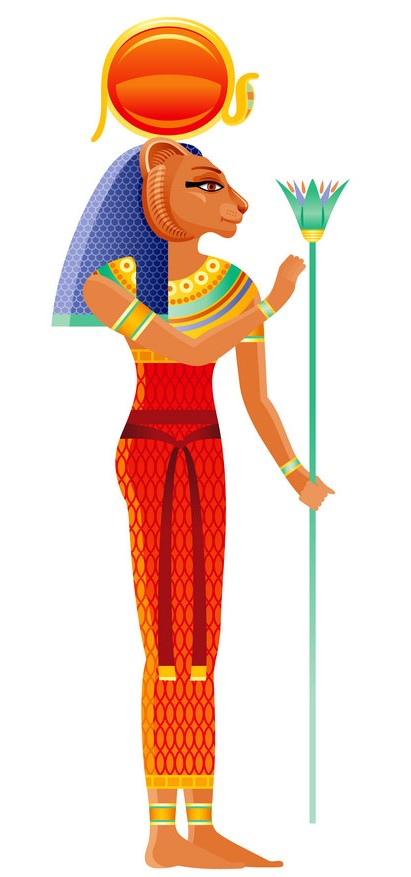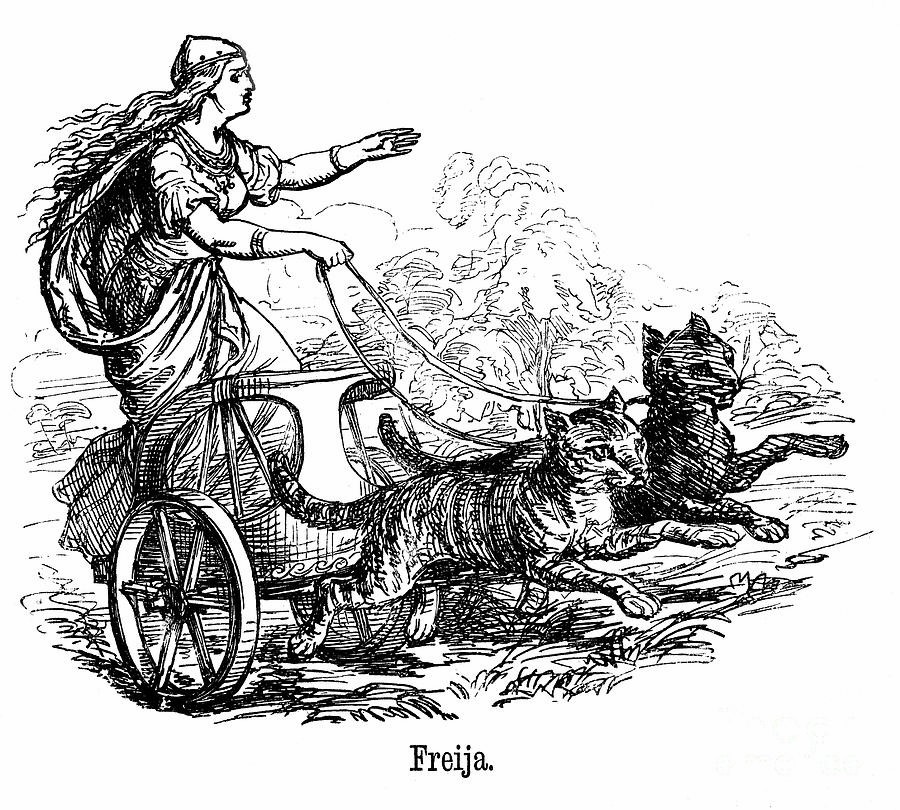When you think of ancient history, your head probably fills with images of Greek mathematicians, Roman conquerors and Egyptian pyramids. But our beloved feline friends have also played an important role throughout ancient times, starring in folk tales, assisting goddesses in tricky situations and even persuading the prophet Muhammad to grant them the ability to always land on their feet. Let’s take a look at the history of cats, specifically in the ancient world, in places like ancient Egypt, Japan, India and beyond.
The history of cats in ancient Egypt
The history of cats in ancient Egypt goes back to Bastet, a feline warrior goddess who was depicted as being half cat and half woman. She was entrusted with no lesser duty than to protect her country. This idea of cats as protectors was built on with the legend of Mafdet, who warded off danger by taking out a devious serpent with the use of her claws, while Sekhmet was a fearsome lion-headed goddess whom ancient Egyptians had to appease before she wreaked havoc and destroyed all of humanity. (So, sort of like a cat left alone with a fresh roll of toilet paper.) To this day, the Sphinx in Giza fuses a human head with a big cat body and embraces the idea of guardianship as he decides who can enter sacred temples.

Egyptians observed the way cats were both caring toward their young while maintaining hunter instincts. Domestic cats were not only cute and cuddly, but they would protect the home by killing mice and hunting snakes. They were protecting families. These were the basic qualities the Egyptians wanted to associate with divinities.
While cats were protecting the homestead in Egypt, over in Japan they were being entrusted with guarding Buddhist scriptures being transported to the country on ships from China. Cats were basically trying to keep mice and rats away from those important objects, so they came to Japan with this revered image.
Cats quickly became the stars of folk tales during the sixth century — and even appeared in horror stories. In one famous yarn, a cat-shaped stone situated along the 53 Stations in Tokaido represents a woman who was unjustly murdered.
Continuing with the daredevil adventures and the history of cats, Nordic mythology features Freya, a multi-tasking character who managed to become the goddess of fertility, love, sex, war, magic and, yep, cats. After Thor woke her up from a catnap one day by tearing around in a chariot pulled by bleating goats, she yelled at him. As Thor continued his cruise at a quieter pace, he chanced across a couple of kittens named Bygul and Trjegul in a tree. He gifted them to Freya, and she used them to pull her own chariot, with local farmers leaving out milk for the cats in a bid to be blessed with a healthy harvest. The felines are considered to be the original Norwegian Forest Cats, and the breed quickly popped up on Viking ships as ratters and garnered a reputation for warding off trolls in fairy tales.

Taking a cue from Freya, Ceridwen was a Welsh goddess who managed to birth a son, Morfran, who looked like a giant black crow. Using a magic cauldron and two white cats who acted as her concierges, she rounded up the necessary ingredients and simmered a potion for a year and a day that would cure Morfran. But things went awry, and a kid called Gwion benefited from the potion. So Ceridwen changed into a Greyhound, an otter, a hawk and a hen to eventually gobble down Gwion once he’d become a grain of corn. As this shape-shifting drama unfolded, the cats simply sat there and watched as if gazing at birds out of a window.
Further folklore shenanigans took place in 4th century India. Cats were initially appreciated for their ability to ward off vermin and snakes, but in the Mahābhārata (a famous 100,000-verse epic poem), a feline called Lomasa teams up with a mouse named Palita to both escape from death while philosophizing about the nature of power. The god Indra also donned a feline disguise to escape from the husband of a maid whom he successfully put the moves on.
There’s a theory that the tale Puss in Boots might have been adapted from an ancient Indian folk story.
The history of cats in ancient Arabia
The greatest kitty moment in the history of cats involves felines in Islam, where Muhammad was a prototype cat guy who outlawed the harming and killing of felines. His cat of choice was Muezza, who had a habit of sleeping on his prayer robe. So smitten was Muhammad with Muezza, that he cut off the sleeve of his robe rather than wake the cat when she decided to take a nap on it.
Collectively repaying the favour, a cat belonging to Muhammad’s ally Abu Hurairah intervened and saved Muhammad from a snake’s attack. In return, Muhammad petted the cat along his back while granting him a very special ability — the knack of always landing on his feet. It’s a move that cats are still pulling off to this day.
If you have cats and are looking for a professional, experienced cat sitter in West Lothian to take care of them. Please do not hesitate to contact Alicat Purrfections, Auntie Ali is passionate about all her kitty Nieces and Nephews. Read the Testimonials to be reassured of the service you will receive https://alicatpurrfections.co.uk/reviews/
To Book, fill in the online booking form https://alicatpurrfections.co.uk/booking-form/

